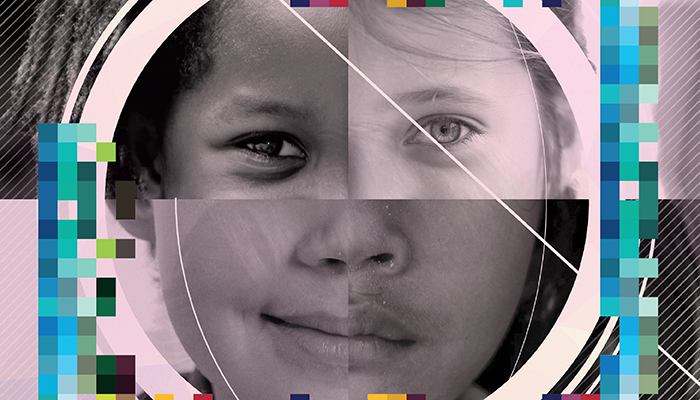
Children photo images sourced from: Pexels.com
Retinopathy of prematurity (ROP) is a multifactorial disorder characterized by an early stage of retinal microvascular degeneration, followed by neovascularization that can, in some cases, lead to permanent visual loss. Research suggests that approximately 30–50 percent of low birth weight preterm infants are affected by the condition, which makes it one the leading causes of blindness and vision loss in pediatric care today.
“ROP is so much more than just a small eye,” says Audina Berrocal, Professor of Clinical Ophthalmology and pediatric retina specialist at the Bascom Palmer Eye Institute, University of Miami, Miller School of Medicine. “It presents unique challenges to the neonatology team, to the screening ophthalmologist, and to the treating ophthalmologist – as well as to the parents.” A key challenge globally remains the mismatch between need and service capacity. This is most prevalent in low- to middle-income countries, but also extends to high-income countries with pediatric ophthalmology remaining less popular amongst trainees in known ophthalmic-hubs, such as the UK and US.
Lola Solebo, pediatric ophthalmologist and clinician scientist at UCL GOS Institute of Child Health and Great Ormond Street Hospital, London, says, “We will need to reach out to trainees to ensure that pediatric ophthalmology is an attractive option; to advocate for support in training posts; and encourage service commissioners and health and governmental bodies to invest in children’s eye health.”
In this regard, one area that has suffered is screening. “The barriers to screening are similar around the world,” says Darius Moshfeghi, Professor of Ophthalmology at Stanford Medicine. They include a lack of specialists, high associated costs, medicolegal risks, geographic dispersion of the at-risk population, and a lack of standardization in programs. However, Moshfeghi believes that “telemedicine, using wide-angle imaging with standardized image sets, mandated weekly exams, central grading sites with experienced expert graders, and implementation of ROP scoring can mitigate most of these barriers.” He also believes that “AI algorithms will supplement and, in some cases, supplant the graders in the future.”
The progress of AI is one of many advances in this space over the last year or so, another being the increased availability and approval of intravitreal therapies; for example, aflibercept. However, there is work to be done in terms of how clinical and research teams implement these interventions. “Defining the real-world use of the drug, together with inclusion criteria, dosage, timing of administration, and the need for follow-up care and additional interventions, will be crucial,” says Solebo.
Advanced devices are also beginning to make a footprint in ROP management, with OCT angiography (OCTA) being of particular interest. “OCTA technology can allow us to non-invasively evaluate the developing neonatal retina,” says Berrocal. “Ultimately, this technology is likely to reduce invasive fluorescein angiography, which, coupled with widefield imaging and AI, could one day determine if an eye requires therapy or whether they remain at risk.”
Solebo adds, “Though dye-based angiography remains important, the information provided by OCTA may be almost as good at improving the understanding of a child’s disease.”
Beyond this, Moshfeghi identifies the Vascular Severity Score (VSS)-based DL system as another important advancement in ROP management: “The system recently demonstrated robust results in two real-world databases in the US and India, as it autonomously identified infants that required treatment.” He also hopes the improvement in OCT for near-complete retinal imaging and non-contact, non-mydriatic imaging systems will address the risks of disease transmission and adverse effects of pharmacologic dilation – and, if the price point is reasonable, see wide-spread global deployment.
To consider the ROP landscape as a whole, “consolidation and standardization are the order of the day,” adds Moshfeghi. “In the US and elsewhere, telemedicine is centralizing grading of infants at-risk for ROP into centers of excellence.” This, in turn, can lead to predictable and scalable approaches to ROP screening, thus minimizing the risk of missing an infant who could benefit from intervention. Moshfeghi also highlights that this will include a shift towards more objective data-based methods, as opposed to the subjective interpretation of bedside binocular indirect ophthalmoscopic examinations.
On the other hand, Berrocal identifies the management of residual post-anti-VEGF avascular retina in ROP as another landscape-defining trend. “Further imaging studies could allow us to better determine which eyes may be observed versus which eyes are better treated for consolidation of peripheral avascular retina,” she suggests, adding that vascular imaging studies integrated with AI could enable the standardization of care in the future.
The therapeutic and technological developments in ROP are no doubt encouraging for families dealing with their child’s diagnosis. Berrocal, Moshfeghi, and Solebo agree that communication is key. “ROP is a black box to the non-ophthalmologist, nursing team, and family members,” says Moshfeghi. And though improving understanding can help with compliance, “Unique difficulties and challenges exist when the spectrum of life-threatening and visually disabling disease coexist,” adds Berrocal.
Solebo notes, “Families of children with potentially blinding conditions often fear sight loss and blindness to the extent that their fear becomes an obstacle to them understanding or retaining information.”
One potential solution is an integrative team approach that encourages the education of parents, discussion of treatment, as well as alternatives and likely outcomes. “Current specific challenges include the absence of a parent physically present in the neonatal intensive care unit, differences of opinion within caregivers, and concerns for the potential morbidities of current screening and treatment modalities,” adds Berrocal. However, she states that the use of virtual telemedicine has greatly improved communication for the caregiver and family.
No doubt, the road ahead involves overcoming many substantial challenges, but the ongoing advancements in technology and developments in treatment modalities offer a promising future for ROP management and the families most affected by this disease.
Children photo images sourced from: Pexels.com
